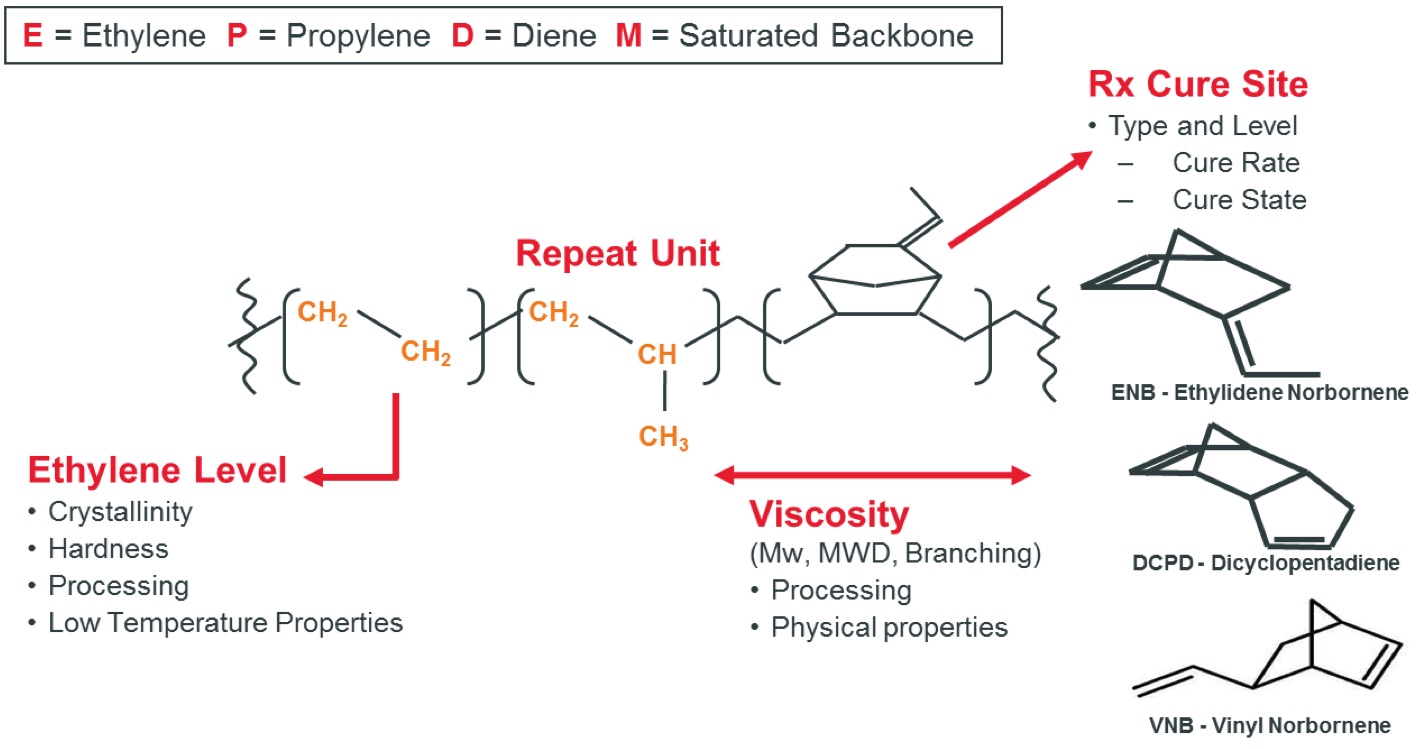EPDM Rubber Developments Enabled By Advanced Molecular Catalyst Technology
Ethylene Propylene Diene (EPDM) hydrocarbon rubber is used in many applications due to its excellent weathering, chemical, and heat aging resistance properties. The major applications include automotive sealing and under the hood parts, construction membranes and gaskets, consumer parts, appliances gaskets, and wire and cable. It is mainly produced using Ziegler-Natta and single site catalysts in a solution or in suspension phase.

Dow revolutionized the EPDM industry in 1997 by producing EPDMs using INSITETM technology [1]. The INSITETM Technology utilized the single site catalyst and modern process technology to deliver clean and gel-free EPDMs that became the benchmark in the rubber industry. Recently, Dow further pioneered the evolution of catalyst technology by developing next generation of molecular catalysts [2], named as Advanced Molecular Catalyst (AMC). The AMC technology set the standards high in terms of catalyst efficiency, higher diene incorporation, and higher temperature stability of the solution process, while still maintaining the clean and gel-free EPDM characteristics. Using high throughput technologies [3], new catalysts were discovered which allowed the efficient manufacturing of newer EPDMs were developed with ultra-high molecular weight [4], higher diene content [5], higher long chain branching [6], and broader molecular weight distribution. In this paper, we will highlight the evolution of catalyst technology, EPDM sustainability footprint [7], new EPDM developments, and finally, some application examples.
™ Trademark of The Dow Chemical Company (“Dow”) or an affiliated company of Dow
[1] J. C. Stevens, Stud. Surf. Sci. & Catal., 1996, 11, 101.
[2] J. Klosin et al., Accounts of Chemical Research, 2015, 48, 2004-2016.
[3] V. Murphy et al., J. Am. Chem. Soc., 2003, 125, 4306-4317.
[4] X. Wu et al., TPE Magazine, 2018, 01, 48-54. ^
[5] Ressnig et al., Rubber Fibers & Plastics, 2017, 04, 230-235.
[6] V. Thakur et al., Plastics Rubbers & Composites, 2019, 48, 32-41.
[7] R. Helling, H. Boone, LCA Internal Report, 2017.